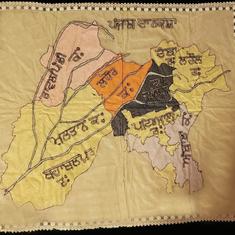For the first time, total horticultural production, at 268.9 million tonne, surpassed foodgrain production, at 257.1 million tonne, in 2012-13.
Horticultural production includes fruits, vegetables, plantation crops, such as tea, coffee and rubber, and spices. While vegetable production contributes 60% to total horticultural production, fruits account for 30%.
India is home to a variety of fruits and vegetables, and is now the world’s second-largest producer. Agricultural land under horticultural cultivation has more than doubled over the last two decades.
In 1991-92, the total land under horticultural crops was reported to be 12.77 million hectares, which has increased to 23.69 million hectares by 2012-13, an increase of 85%. Total production has increased nearly 2.8 times during this period, with productivity increasing 1.5 times.
Famers could be moving towards horticultural production due to increased demand for healthy and fresh farm products in organised urban markets, itself a reflection of rising prosperity.
A higher shelf life of fruits and vegetables due to better refrigeration, transportation and accessibility to markets appears to have boosted horticultural production.
Lets us look at the rising trend in horticultural production vis-à-vis foodgrain.

Source: Ministry of Agriculture, FY 2014 figures are provisional.
There has been a growth of 84% in total horticultural production from 2001-02 to 2012-'13. The total horticultural production reached 268.9 million tonne in 2012-'13, far ahead of total foodgrain production of 257.1 million tonnes in the country.
Horticultural hot zones in the world’s second-largest producer
West Bengal tops horticultural production with 29.2 million tonnes followed by Andhra Pradesh recording 28.9 million tonnes.
Let us look at state-wise production of top two major horticultural contributors (i.e. fruits and vegetables) in the country.

Source: Ministry of Agriculture
Andhra Pradesh is the leading producer of fruits with 13.9 million tonnes, accounting for a 17% share in 2012-13. Maharashtra with 9.7 million tonnes (12%) was ranked second followed by Gujarat (8.4 million tonnes and 10%).
Total fruit production in the country increased 8.5% to 81 million tonnes between 2010-'11 and 2012-'13. India is the largest producer of mango, banana, papaya, sapota, pomegranate, acid lime and aonla.

Source: Ministry of Agriculture
India grows more than 40 kinds of vegetables. West Bengal tops with a 15.7% share of total vegetable production in the country in 2012-'13. There has been an increase of 10.6% in total vegetable produce in the country from 2010-'11 to 2012-'13 with total output reaching 162 million tonnes.
Uttar Pradesh is the second largest producer of vegetables with 19 million tonnes followed by Bihar (16 million tonnes), Madhya Pradesh and Andhra Pradesh with 12 million tonnes each.
Major vegetables grown in India include potato, tomato, onion, brinjal etc. India leads the world in the production of peas and okra, while it is ranked second in the production of brinjal, cauliflower, cabbage and onion.
India is also the largest producer, consumer and exporter of spices in the world, with around 50 species grown in the country.
India’s productivity as much as China’s
India’s contribution to world production of fruits and vegetables in 2012-'13 was 12.6% and 14%, respectively.

Source: Lok Sabha; Figures for FY 2013
China is the largest producer of fruits with an output of 137 million tonne. Among the top five fruit producers in the world, four are developing nations. India accounts for 12.6% of the world’s total fruit production, compared with China’s 21.2%, but both countries have the same productivity rate of 11.6 million tonnes/Ha.

Source: Lok Sabha; Figures for FY 2013
India is also the largest vegetable producer after China. India produces 16 million tonnes of vegetables compared with China’s 57 million tonnes. India’s productivity is the lowest compared to the top 10 countries around the world with just 17.6 million tonnes/Ha whereas Spain tops with 39.3 million tonnes/Ha.
The total value of India’s horticultural exports in 2013-'14 was Rs 14,365 crore (nearly $2.4 billlion). Despite being the world’s second-largest producer of fruits and vegetables, India accounted for just 0.36% and 1.03% of exports, respectively, in terms of value, in 2012.
The export failure could be because India does not produce enough to meet its food-security norms, according to this research paper by P.K Sinha for the Indian Institute of Management, Ahmedabad. Sinha suggested that production should grow four-fold to generate marketable surplus and improve exports.
The Indian government is trying to boost exports. A Mission for Integrated Development of Horticulture is being implemented during 2014-'15, providing new infrastructure development, market promotion, boosting quality and transport. The National Horticulture Mission, set up by the government in 2005-'06, has also helped the sector evolve over the years.
This post originally appeared on IndiaSpend.com, a data-driven, public-interest journalism non-profit.










